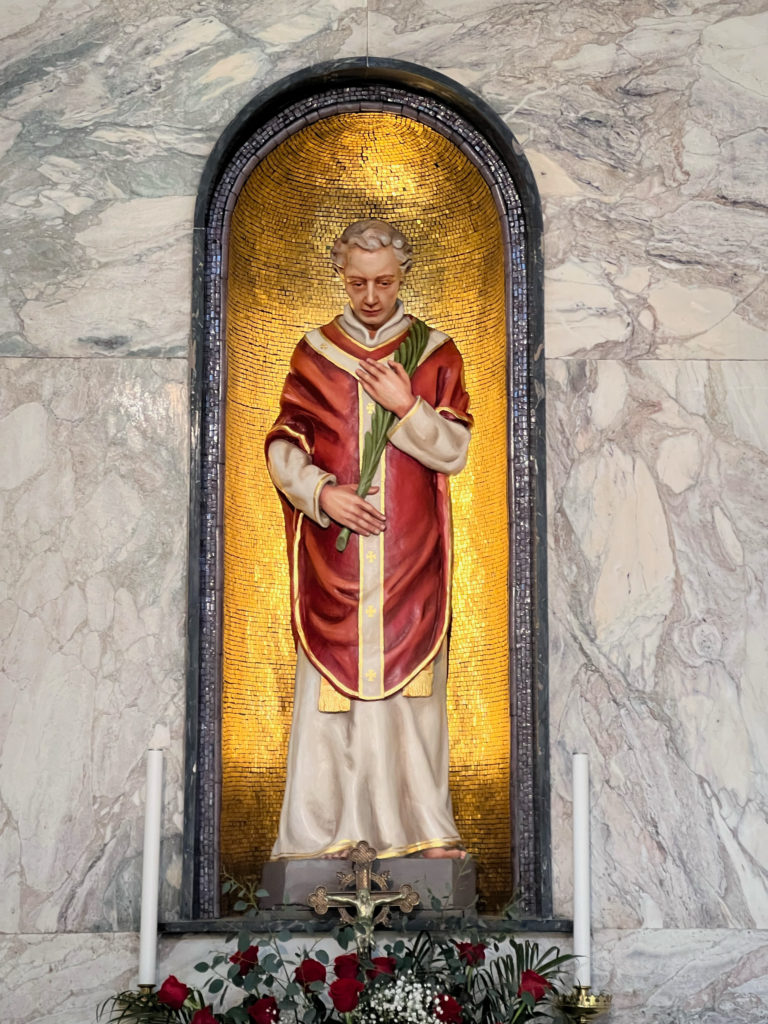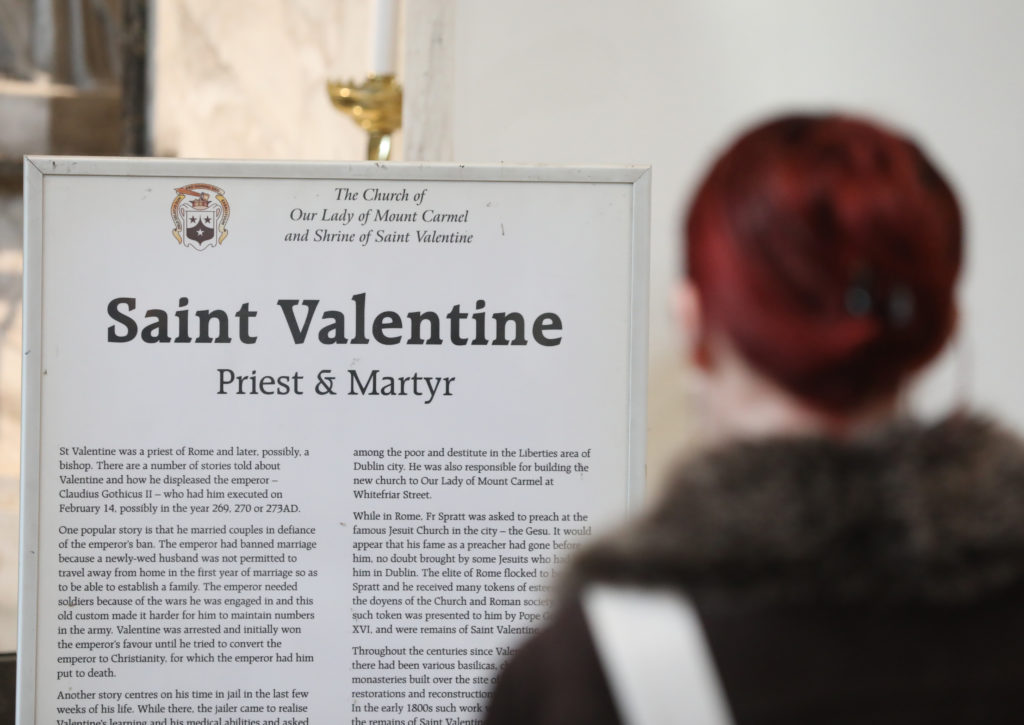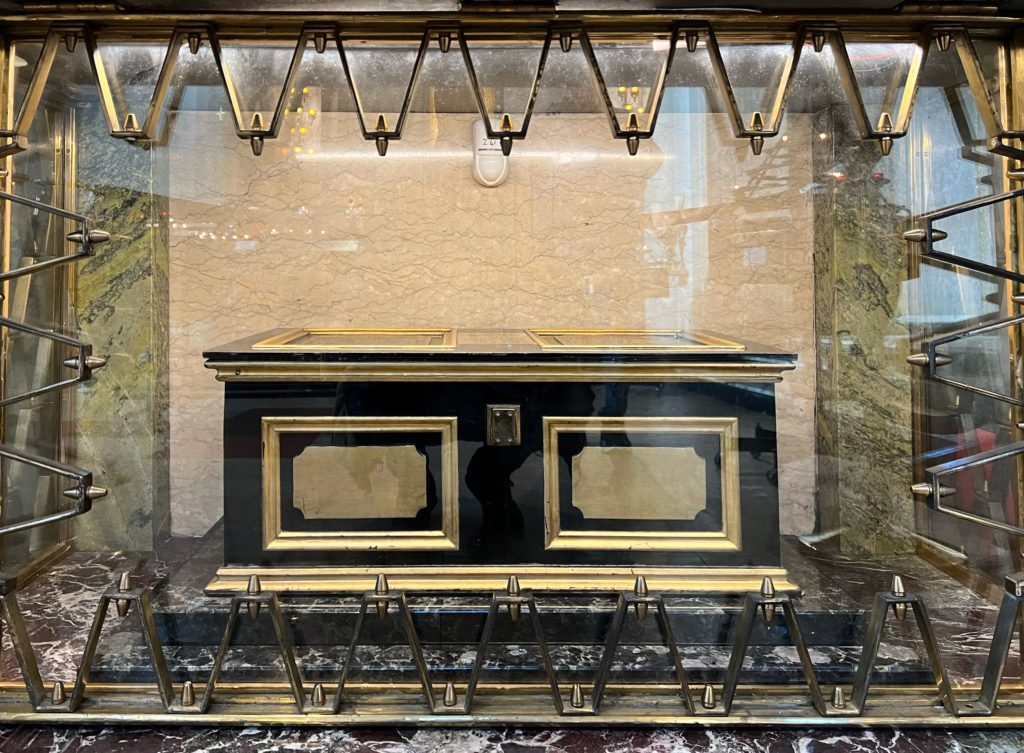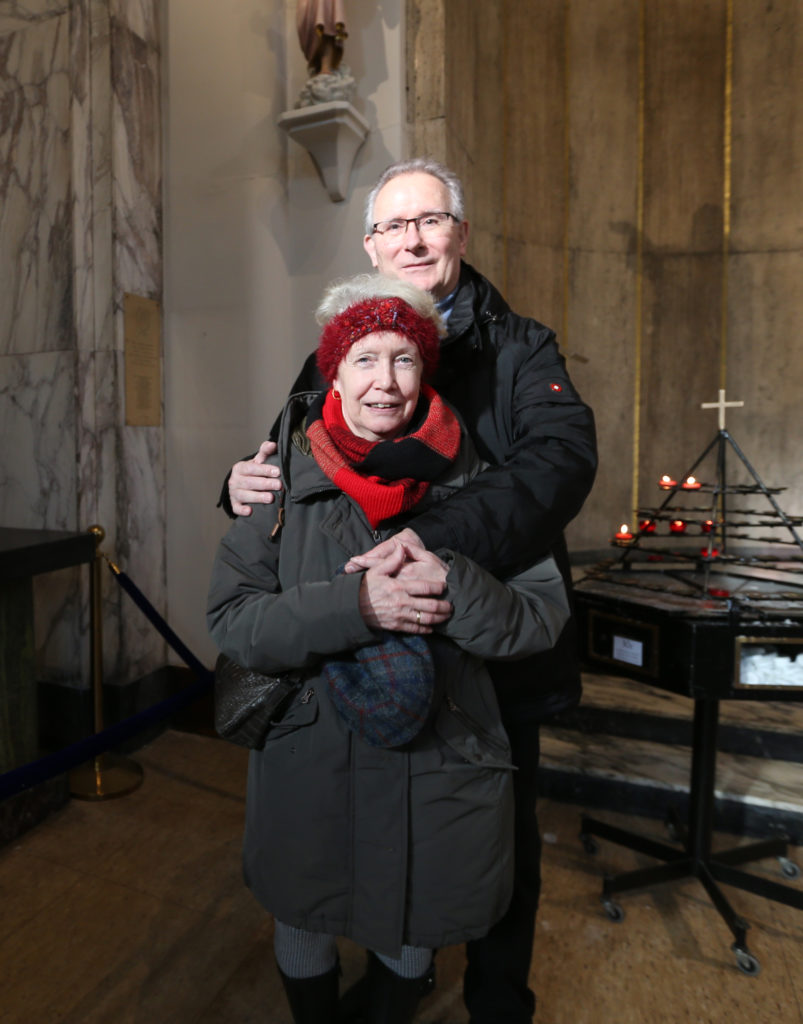EVERY year in and around St Valentine’s Day, couples from across the globe make a beeline for the Shrine of St Valentine in Whitefriar Street Church in Dublin.
Over the last few decades the church in Aungier Street, which is maintained by the Carmelite order, has become a traditional place of pilgrimage for all kinds of lovers.
 The Shrine of St. Valentine in Whitefriar Street Church, Dublin
The Shrine of St. Valentine in Whitefriar Street Church, DublinComplete with an altar and life-size statue of St Valentine, the shrine contains an alarmed casket enclosing a number of St Valentine’s bones and a vial of his blood.
An inscription on the casket, or reliquary, reads: ‘This shrine contains the sacred body of Saint Valentinus the Martyr, together with a small vessel tinged with his blood.’
 The site where St Valentine's remains are buried in Whitefriar Street Church in Dublin
The site where St Valentine's remains are buried in Whitefriar Street Church in DublinYes, it is true – St Valentine is enshrined in Dublin.
So just how did the relics of the patron saint of love end up in the centre of the Irish capital?
Unfortunately, the story started with a rather gruesome end to his life.
It's believed that on February 14 around the year 270 AD, Valentine, then working as a holy priest, was beaten with clubs and then beheaded for defying the Emperor Claudius II, known as ‘Claudius the Cruel’.
Believing that Roman men were unwilling to join the army because of their strong attachment to their wives and families, Claudius had banned all marriages and engagements to get rid of the problem.
Valentine, realising the injustice of the decree, defied Claudius and continued to perform marriages for young lovers in secret. The martyred remains of Valentine were buried in Rome.
 St Valentine's remains lie in Whitefriar Street Church
St Valentine's remains lie in Whitefriar Street ChurchEnter into the equation an Irish priest, Father John Spratt.
In the 1800s he was a famous preacher, and one of his many fans was none other than Pope Gregory XVI.
One time Father Spratt was invited to speak at a church in Rome, where Pope Gregory was among those listening to him.
It is said that in thanks and in admiration for the Irish priest’s oratory, Pope Gregory gifted him the reliquary of St Valentine’s remains.
 Karen and Tomas Brinkmann from Germany came to the grave in Dublin to mark Valentine's Day 2023
Karen and Tomas Brinkmann from Germany came to the grave in Dublin to mark Valentine's Day 2023Duly taken to Ireland, the reliquary arrived in Dublin on 10 November 1836, in a wooden casket with Pope Gregory XVI’s coat of arms, accompanied by a letter attesting to the contents of the casket.
Over time, the saint’s remains were gradually forgotten about, until a new shrine to Valentine was constructed in the 1950s. Its popularity has continued to grow ever since.
Throughout the year, the Whitefriar Street Church regularly hosts visitors paying their respects to the patron saint of love – but there is always a notable rise in pilgrims around St Valentine’s Day.
If you can, visit St Valentine’s Shrine today (February 14) itself, as the church holds special sermons and blessing of rings ceremonies.
After your visit, there are plenty more Dublin city sites you cold enjoy - including Trinity College Dublin, Dublin Castle, the Guinness Storehouse, EPIC The Irish Immigration Museum and more.
For further inspiration for your next visit to Dublin, visit www.ireland.com

